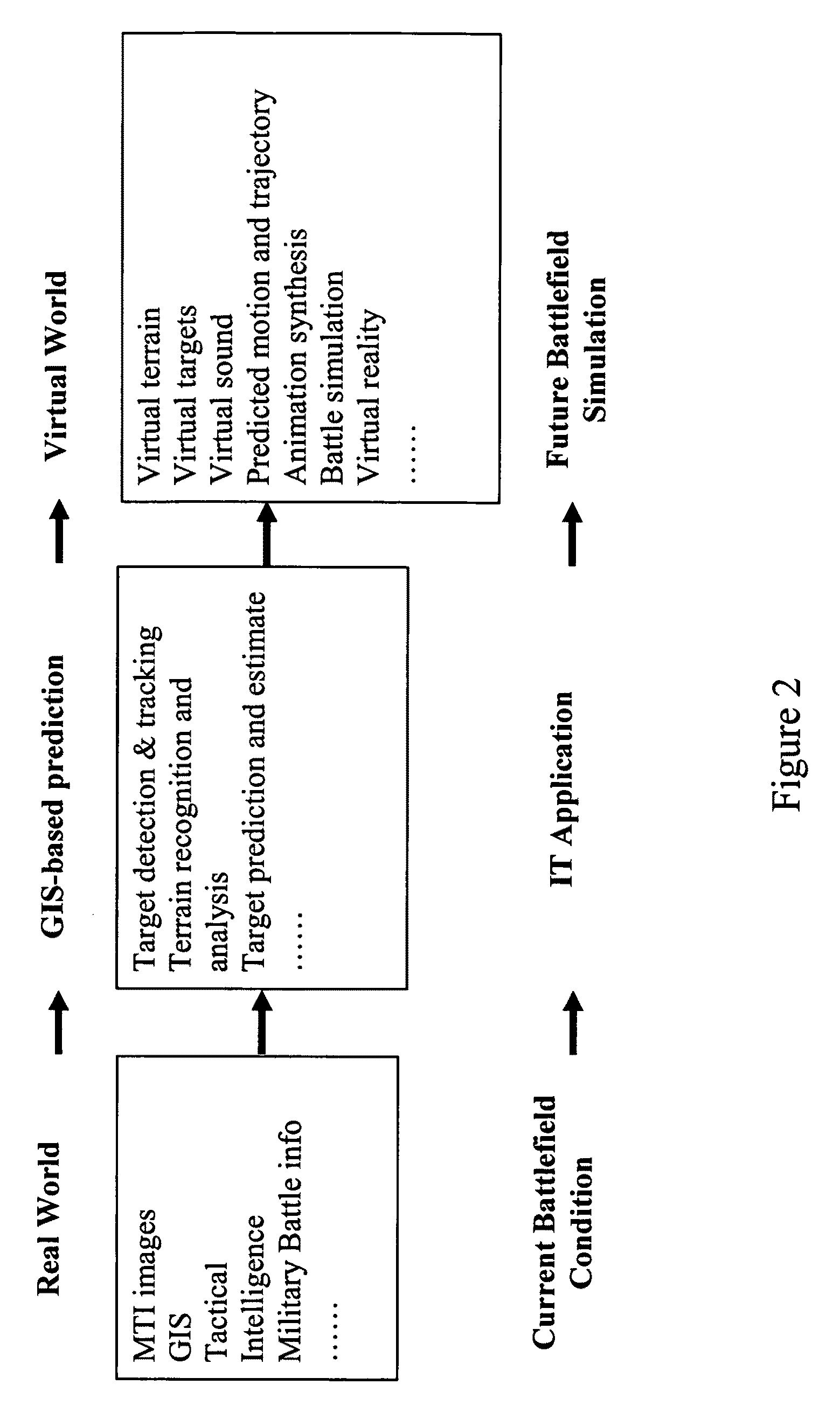4D GIS based virtual reality for moving target prediction
a virtual reality and target technology, applied in the field of computer vision systems, can solve the problems of not being able to predict future locations, not addressing the key issue of how to apply terrain and mobility factors, and current targeting systems such as advanced field artillery tactical data systems (afatds) cannot predict future locations, so as to increase the degree of confidence of target motion prediction processes
- Summary
- Abstract
- Description
- Claims
- Application Information
AI Technical Summary
Benefits of technology
Problems solved by technology
Method used
Image
Examples
Embodiment Construction
[0091]The present invention is outlined below:[0092]The created system concept of moving target prediction and simulation is to use information technology to analyze the current battlefield situation (real world), then predict and simulate the future battlefield possible condition (virtual world). The input to the system is the real world description of the current battlefield, and the output is the virtual world through the simulation of the future battlefield, as shown in FIG. 2.[0093]The developed method for the real world description of the current battlefield's status includes images from the moving target indication (MTI) sensors, geographic environment and condition of the battlefield from GIS, military intelligence, and related battlefield data from some military decision-making system, such as CDAS and AFATDS.[0094]The designed system architecture consisting of: (1) moving target tracking and prediction, and (2) target motion 4D simulation, as shown in FIG. 3. The tracking ...
PUM
 Login to View More
Login to View More Abstract
Description
Claims
Application Information
 Login to View More
Login to View More - R&D
- Intellectual Property
- Life Sciences
- Materials
- Tech Scout
- Unparalleled Data Quality
- Higher Quality Content
- 60% Fewer Hallucinations
Browse by: Latest US Patents, China's latest patents, Technical Efficacy Thesaurus, Application Domain, Technology Topic, Popular Technical Reports.
© 2025 PatSnap. All rights reserved.Legal|Privacy policy|Modern Slavery Act Transparency Statement|Sitemap|About US| Contact US: help@patsnap.com



